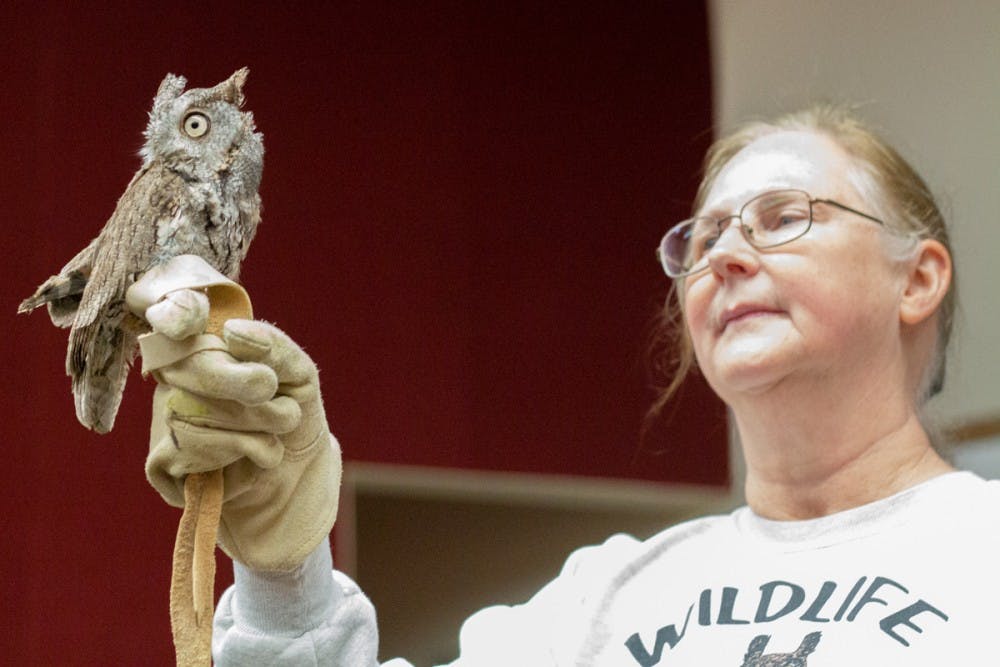'Birds of Prey' show emphasizes the importance of wildlife conservation

Wildlife Recovery Association founder Barb Rogers holds an owl for an event April 17 in Anspach Hall.
While Anspach Hall is traditionally the site for political science lectures and English workshops, room 161 welcomed a burrowing owl, great horned owl and other birds of prey as the building's latest educators.
The Student Chapter of the Wildlife Society invited Shepherd's Wildlife Recovery Association for its "Birds of Prey" show on April 17, an end-of-the-year celebration commemorating localized conservation and connectivity amongst birds and humans.
Mount Pleasant senior Zack Kujat, a member of the Wildlife Society at Central Michigan University, said he was extremely "jazzed up" for the event.
"Growing up, I spent so much time outside and in nature and would always find the same owl in the trees," Kujat said. "This is such an important an event to show how connected we all are, especially in Michigan when we're surrounded by so many forests and lakes and wildlife."
Kujat said the event served the special purpose of emphasizing the cruciality of conservation.
The birds featured in the show, such as a duo of eastern screech owls and a shy barred owl, were checked into the association's care after being injured or orphaned.
"We usually try, to the best of our abilities and resources, to foster the birds for as minimum of time as possible once they're brought in to us," said Barb Rogers, founder of Shepherd's Wildlife Recovery Association. "We nurture them and give them any assistance and help they need to be released back into the wild."
Their inabilities to abide successfully in the wild have allowed them the mores to become certified educational animals.
Barb said their family of hawks, eagles, falcons and owls are responsible for teaching the value of conservation and promoting a better understanding of Michigan's winged-creatures and nocturnal hunters.
The first bird to be presented was an eastern screech owl named Big Red. The full-grown bird sat delicately on its handler's fingers, slightly bigger than a human hand.
"His name was actually Little Red at first, but since he's full grown we figured he didn't like being called little," said Joe Rogers from the association. He explained that Big Red was discovered after being hit by a car, along with his female and grey-colored partner, Sparkle.
Joe also brought out a barred owl, and said the owl can scream in a manner very similar to a female human.
"The police would get called late in the night because people would think they heard a screaming woman in the night," he said. "I would always volunteer to join the rescue groups to save a beautiful girl, but would always end up just finding an owl."
He said despite popular misconception, owls rarely make the well-known "hoot" sound. He said he vividly remembers a barking short-eared owl residing behind his childhood home.
"This owl barked so much we started calling it a puppy dog owl," he said.
New Baltimore senior Shane Marrs said the event was the equivalent to CMU having dogs in the library for the wildlife enthusiast.
"It's important to acknowledge without birds of prey, there will be a distinct disturbance in the environment's balance," Marrs said. "There is really a duty assigned to all of us and things to do on even the most individual and the local level."







